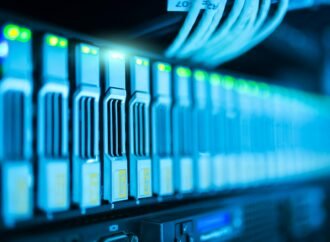Explore how edge computing is revolutionizing data analytics by processing data at the source for faster insights, improved efficiency, and enhanced security in real-time applications.
In today’s fast-paced digital world, businesses are generating more data than ever before. From IoT sensors and connected devices to real-time analytics and AI-powered applications, organizations need faster, more efficient ways to process and analyze data. Traditional cloud computing models, where data is sent to centralized servers for processing, often struggle with latency, bandwidth constraints, and security concerns.
Edge computing is revolutionizing the way data is handled by bringing computation closer to the data source. Instead of relying solely on cloud-based processing, edge computing enables on-device or near-source analytics, delivering insights instantly and reducing the load on centralized systems. This decentralized approach is transforming industries by enhancing speed, efficiency, security, and scalability.
Key Benefits of Edge Computing
Reducing Latency: Instant Insights Where It Matters
One of the biggest advantages of edge computing is its ability to minimize latency. When data is processed locally—at the edge of the network—it eliminates the need to send information back and forth to distant cloud servers. This is particularly critical for applications that demand real-time decision-making, such as:
- Autonomous vehicles that require instant processing of sensor data for navigation and hazard detection.
- Healthcare monitoring systems that continuously track patient vitals and provide immediate alerts for critical conditions.
- Industrial automation, where smart manufacturing systems adjust processes based on real-time sensor inputs.
By reducing delays, edge computing allows businesses to respond immediately to changing conditions, ensuring smoother operations and better outcomes.
Improving Efficiency: Optimizing Bandwidth and Cloud Usage
Edge computing enhances efficiency by processing only relevant data locally before sending it to the cloud. Instead of overwhelming central servers with massive raw data streams, edge devices filter and refine data, ensuring that only meaningful insights are transmitted.
This reduces bandwidth consumption and lowers cloud storage costs, making it a cost-effective solution for organizations dealing with large-scale IoT deployments and real-time analytics.
For example:
- Retail stores use smart cameras to analyze customer traffic patterns locally, sending only key insights to cloud systems for marketing strategies.
- Smart city infrastructure processes traffic sensor data on-site to optimize signal timings without overloading central servers.
By offloading unnecessary data processing to the edge, businesses can enhance performance while optimizing operational costs.
Enhancing Security: Protecting Sensitive Data Locally
As cyber threats evolve, data security is more important than ever. Edge computing strengthens security by limiting data exposure and keeping sensitive information closer to its source. Instead of transmitting sensitive data over long distances to cloud environments, edge devices can:
- Encrypt and anonymize data locally before sending it to external systems.
- Restrict access to data by processing it within secured, on-site environments.
- Mitigate risks associated with centralized cloud breaches by distributing processing workloads across multiple locations.
For industries like finance, healthcare, and government services, edge computing ensures compliance with data privacy regulations while minimizing risks associated with cyberattacks.
Scaling Easily: Managing Growing Data Volumes Efficiently
With the exponential growth of IoT devices and connected systems, businesses need scalable solutions that can handle increasing data volumes without overloading cloud infrastructure. Edge computing provides distributed processing power, allowing organizations to scale effortlessly as their data needs expand.
For example:
- Utility companies use edge computing in smart grids to analyze consumption data locally before sending key insights to a central hub.
- Remote operations, such as oil rigs and mining sites, deploy edge computing to process critical data without relying on unstable network connections.
By distributing computation across multiple edge locations, businesses can support future growth without compromising performance or reliability.
How Edge Computing is Shaping the Future of Data Analytics
As digital transformation accelerates, edge computing is becoming a game-changer for businesses looking to gain real-time insights, improve operational efficiency, and strengthen security. Industries such as healthcare, retail, manufacturing, logistics, and telecommunications are already leveraging edge technology to enhance their analytics strategies.
Organizations that embrace edge computing will benefit from:
- Faster, more responsive decision-making powered by real-time insights.
- Lower costs due to reduced cloud dependency and optimized bandwidth.
- Improved cybersecurity with localized data protection.
- Seamless scalability to support growing IoT ecosystems.






















